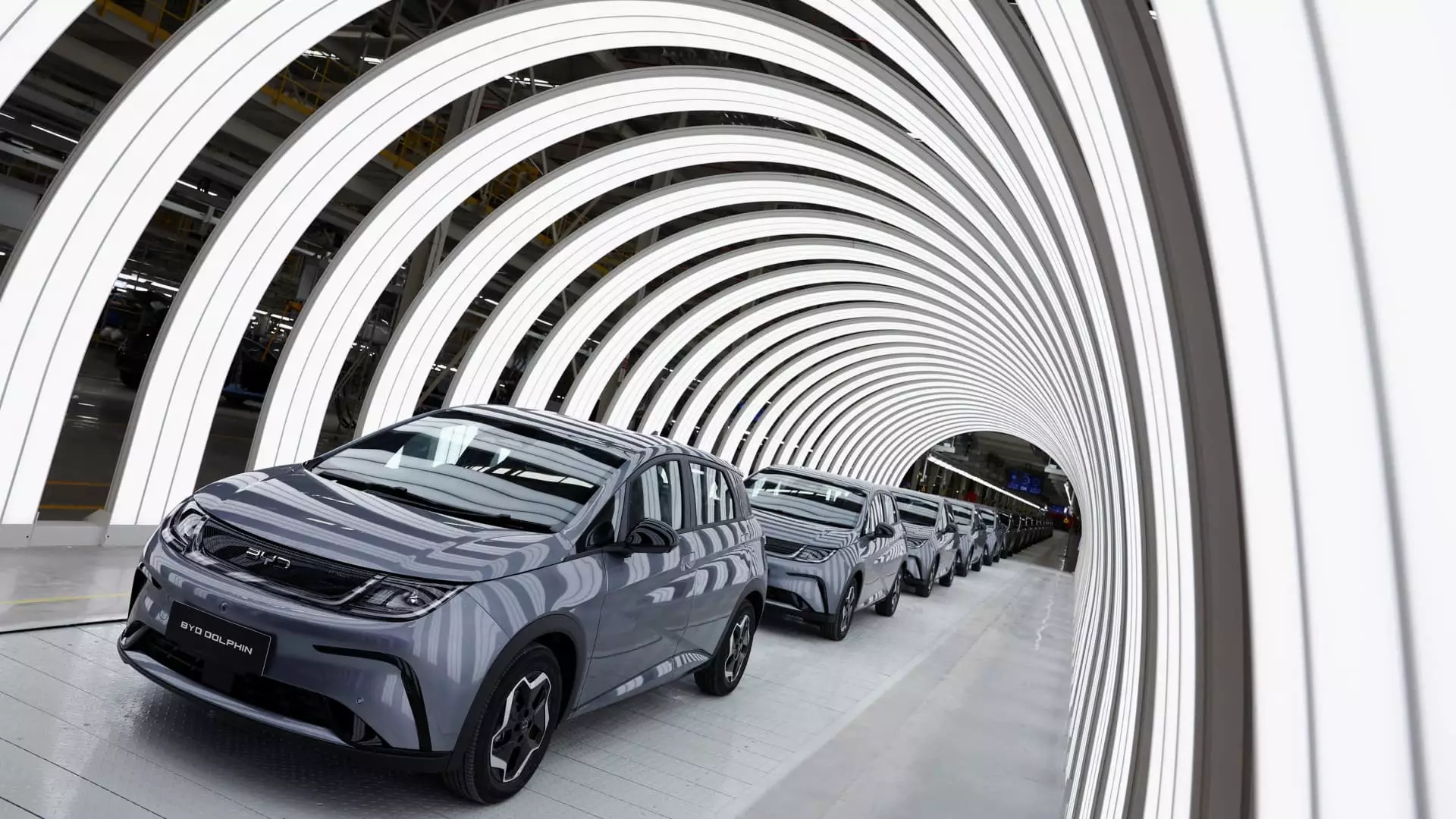As the electric vehicle (EV) industry continues to evolve, Chinese automaker BYD (Build Your Dreams) is not just keeping pace but is taking significant strides forward. The recent launch of a sophisticated driver-assistance system has drawn considerable attention from analysts, many of whom predict a boom for suppliers involved in this cutting-edge technology. This article examines BYD’s latest innovations, the broader implications for the automotive supply chain, and the anticipated ripple effects throughout the electric vehicle landscape.
Introducing a driver-assistance system that spans BYD’s lineup—including its budget-friendly models priced under 70,000 yuan (approximately $9,600)—the company is positioning itself strategically within a highly competitive market. The integration of DeepSeek’s artificial intelligence capabilities exemplifies BYD’s commitment to enhancing user experience through technology. As key features like lane-keeping assistance, adaptive cruise control, and automated parking become standard, customers are increasingly seeking vehicles equipped with these capabilities. This trend highlights a crucial selling point for manufacturers, and BYD, with its competitive pricing and tech-savvy features, is poised to attract a vast customer base.
Recent share performance indicates strong investor confidence in BYD, evidenced by its stock price hitting record numbers following the announcement of its driver-assistance systems. Nomura analysts noted that suppliers of components for these systems will likely experience robust financial growth, boosting the overall market sentiment. The interconnected nature of BYD’s innovations and its suppliers creates a favorable environment for investment in companies associated with smart driving technologies, signaling a shift not only in consumer preferences but also in investor strategizing.
As BYD embarks on this venture, it’s essential to look at the suppliers that stand to benefit from enhanced demand for driver-assistance components. Firms like BYD Electronics, which specializes in autonomous driving components, and others such as Horizon Robotics and Hesai Technology are being closely watched by analysts. With the rise of driver-assistance features, there’s a growing necessity for high-quality chipsets and advanced sensors like lidar, which are crucial for ensuring the reliability and accuracy of these systems.
Horizon Robotics, in particular, is highlighted as a major supplier for BYD, having its products embedded in the automaker’s driver-assist offerings. As interest in driver-assistance technology soars, analysts predict significant revenue growth for suppliers aligned with BYD’s strategy, thereby amplifying the importance of strategic partnerships within the automotive supply chain.
The launch of BYD’s driver-assistance systems also signals a competitive response to global players like Tesla, which, despite its innovations, has faced challenges in obtaining regulatory approval for its Full Self-Driving technology in China. The swift deployment of BYD’s system could reconfigure market dynamics, compelling other automotive manufacturers to expedite their own advancements in smart driving technologies.
As demand rises, especially in the low-cost vehicle segment, many traditional automakers will likely feel pressured to enhance their tech offerings. This burgeoning urgency is expected to saturate the market with advanced driver-assistance features, ultimately benefiting consumers and driving a more comprehensive shift towards the electrification of transportation.
Analysts are bullish on the long-term prospects for the driver-assistance segment, projecting that fleets of over three million BYD vehicles equipped with these advanced systems will hit the roads in the coming years. As aftermarket upgrades and programmatic support continue to evolve, firms like BYD Electronics are well-placed to capitalize on this growth.
Goldman Sachs has identified increasing revenue potential stemming from advancements in driver-assistance systems. Innovations in chipsets will not only influence vehicle performance but also create a more lucrative revenue stream for suppliers, paving the way for sustained growth throughout the entirety of the supply chain.
Ultimately, BYD’s aggressive play in the driver-assistance space reveals broader trends within the electric vehicle market, spanning consumer preferences, regulatory changes, and technological advancements. As the automotive landscape continues to evolve, BYD’s moves may be a telling harbinger of the next phase in the integration of advanced technologies into everyday vehicles. These developments could very well redefine how consumers perceive automotive safety, autonomy, and accessibility in the years to come.

